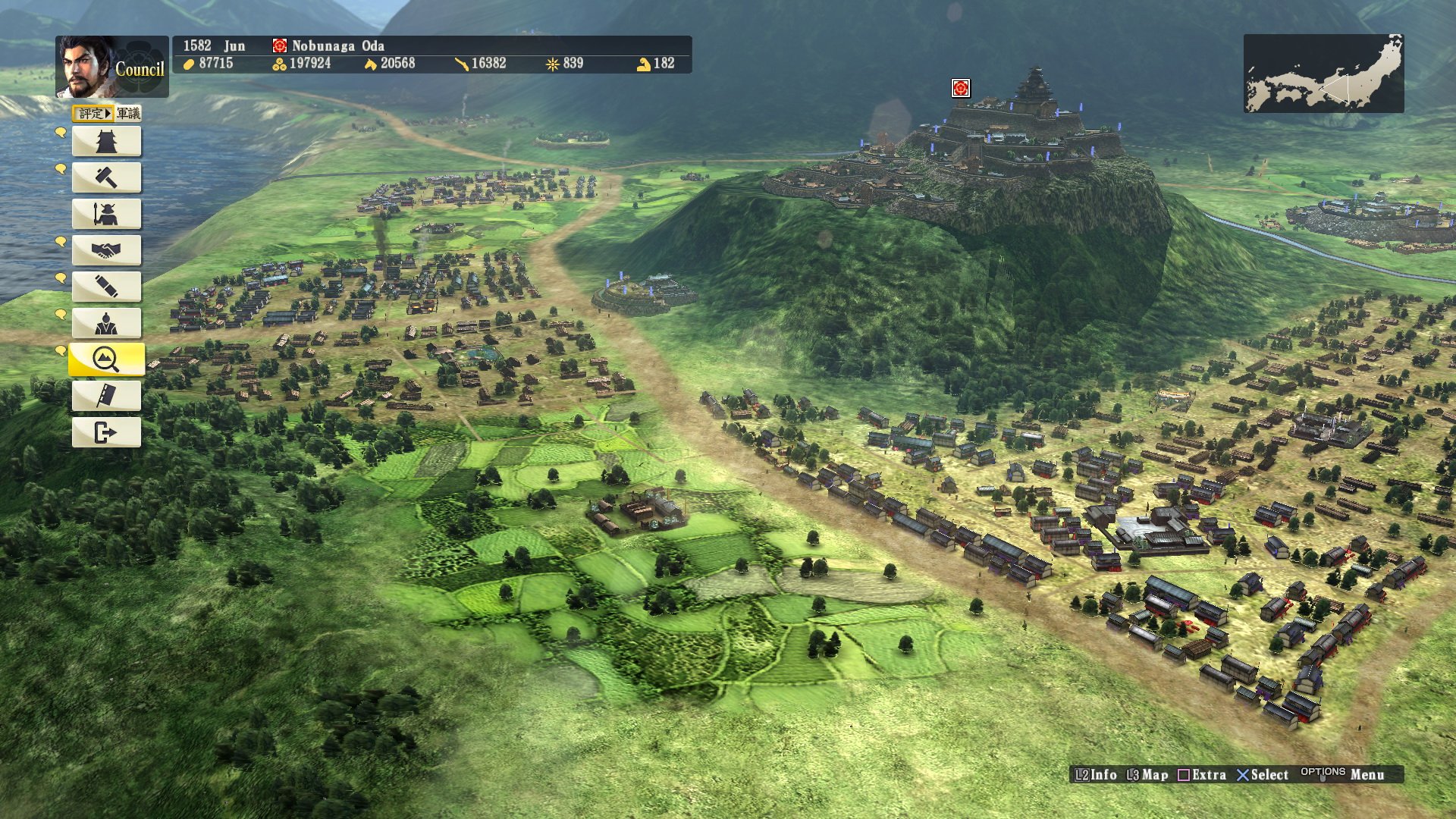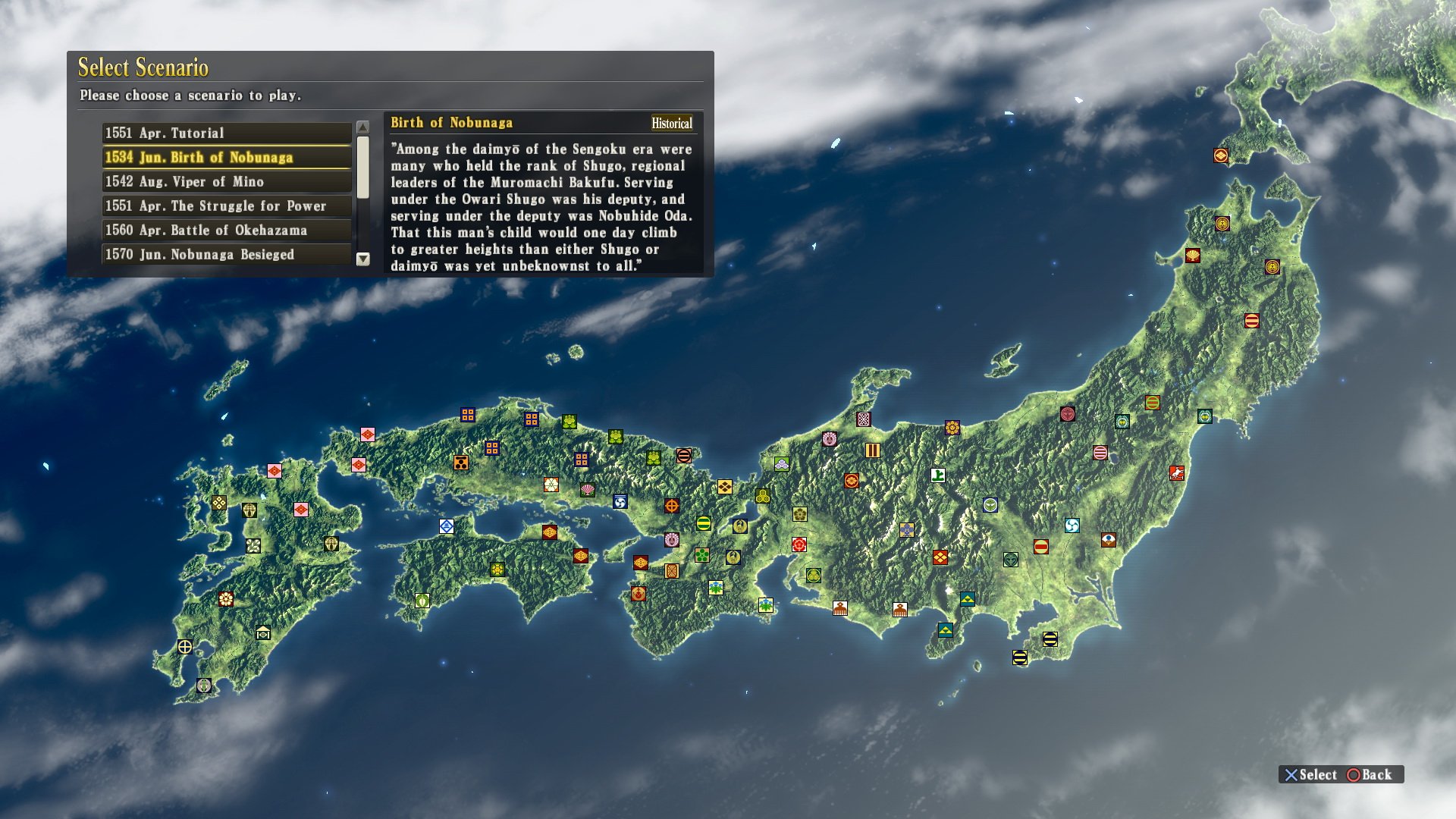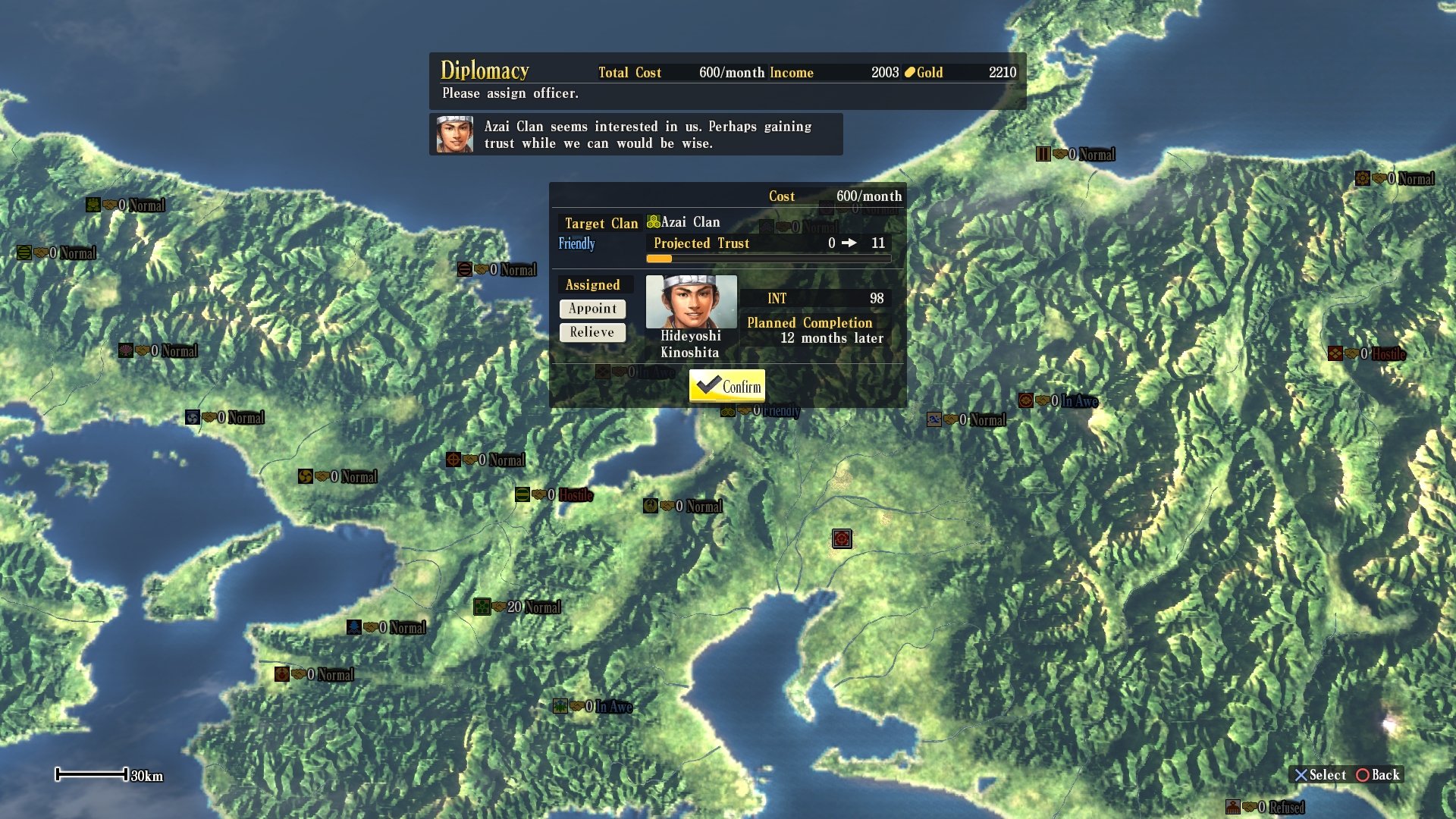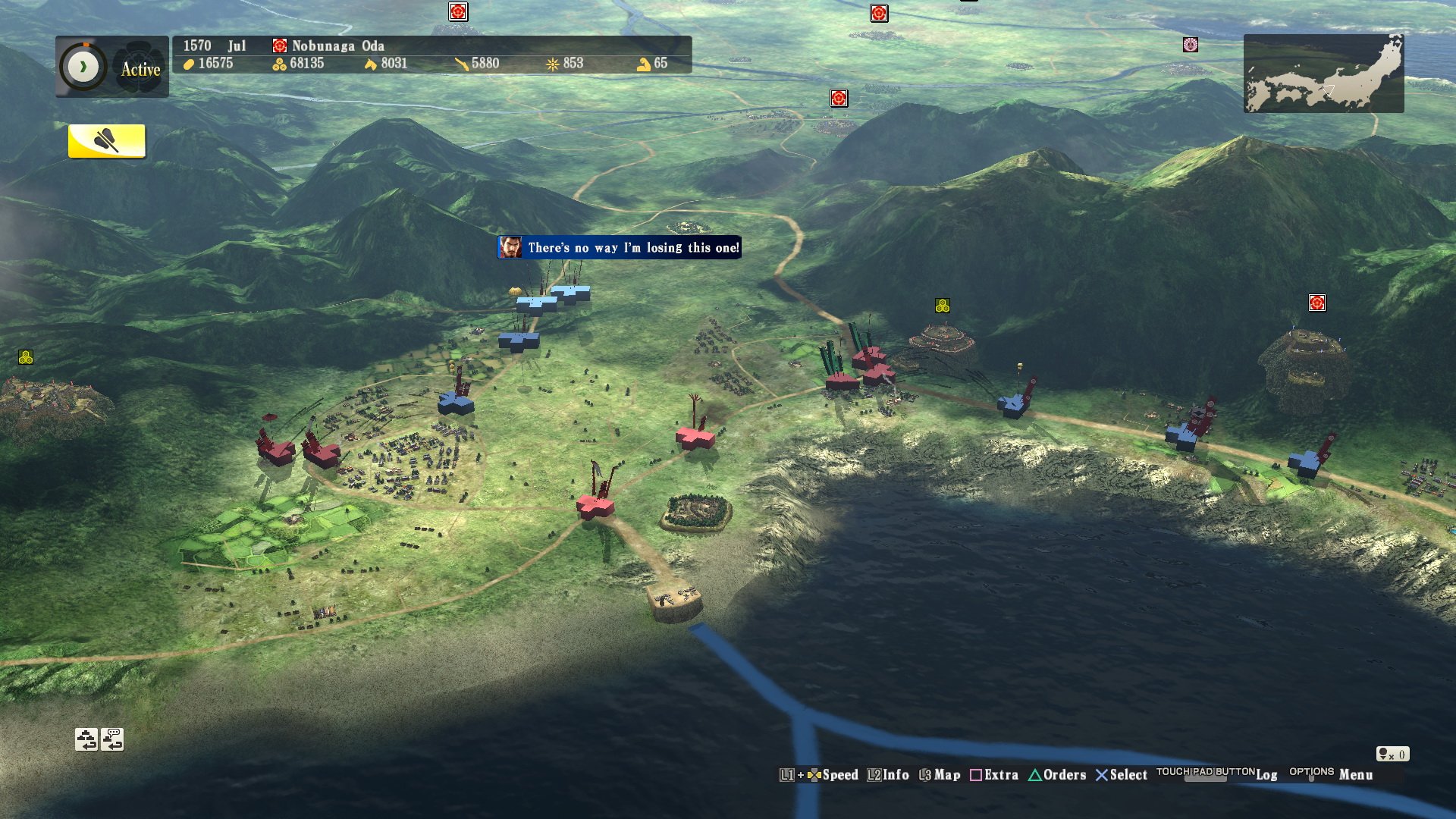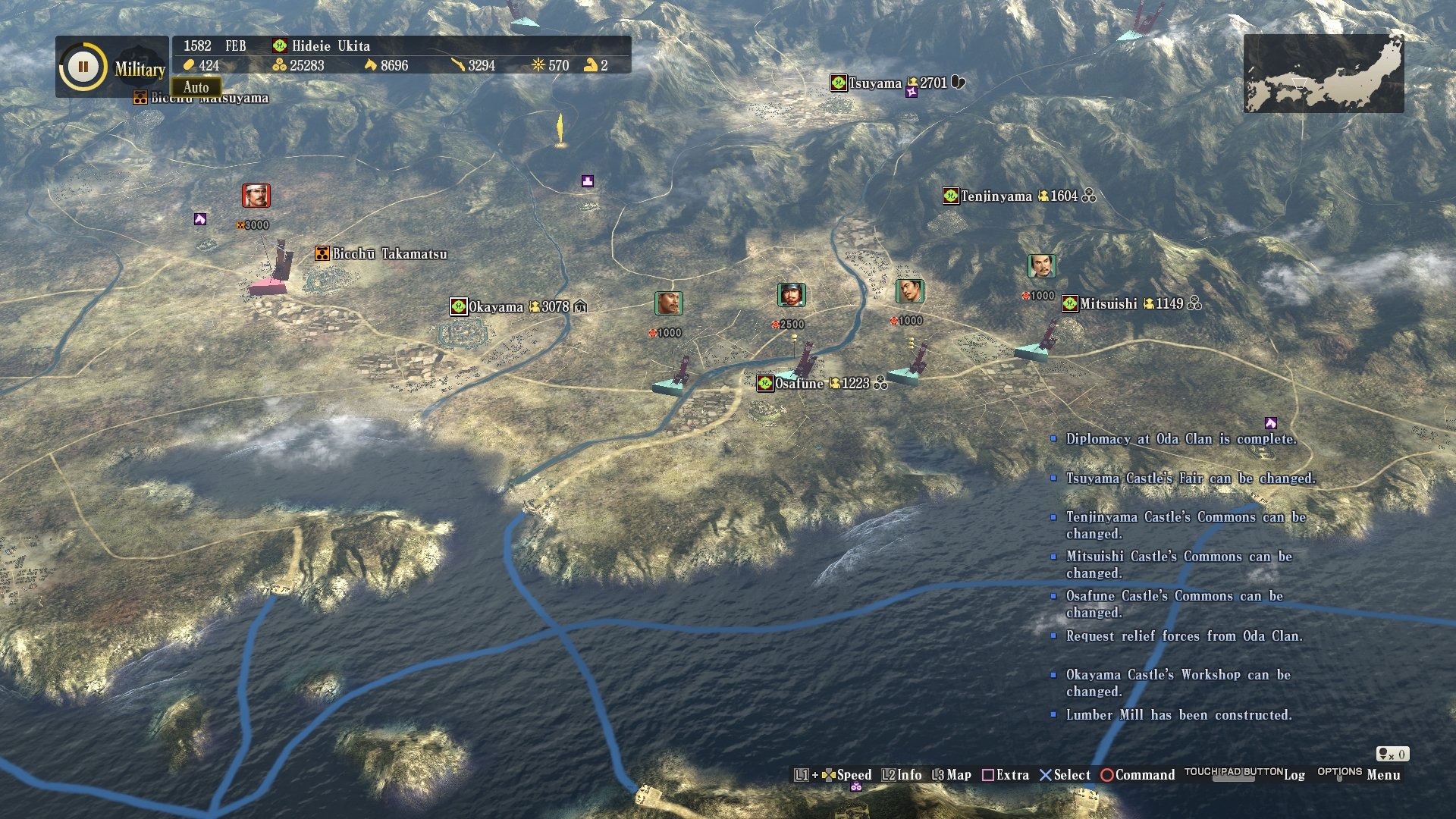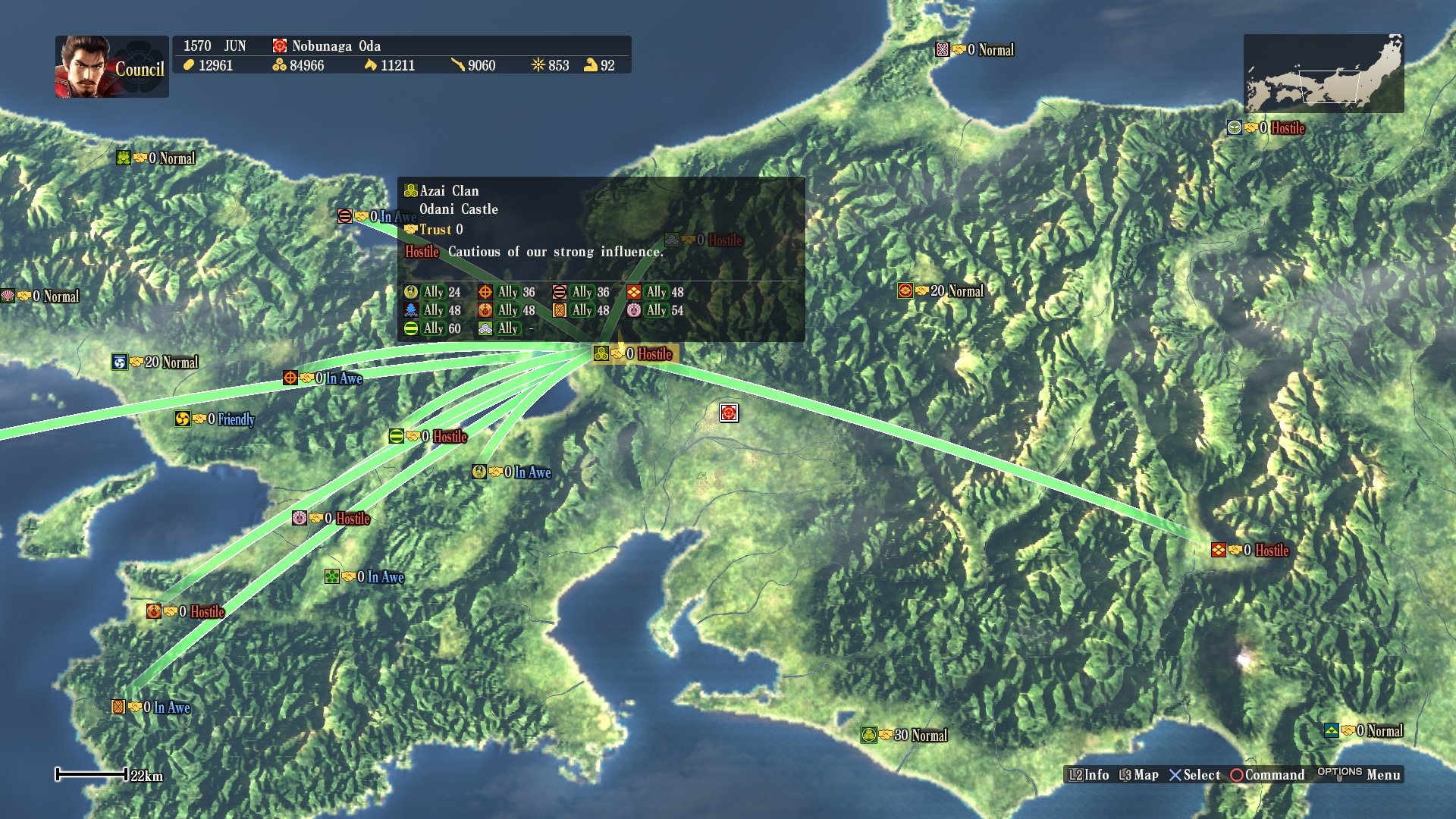Nobunaga’s Ambition: Sphere of Influence Review – The Unification of Grand Strategy? (PS4)
Nobunaga’s Ambition: Sphere of Influence is the fourteenth game in the Nobunaga’s Ambition grand strategy series, but outside of Japan you wouldn’t really know it. Some games in the series have been released in North America, but in Europe we’ve barely seen much of the series at all besides Wii U Virtual Console release of the North American SNES port of the first game last September.
It’s a real shame as its original 1983 PC release was a pretty big deal in terms of the history of grand strategy games, influencing a lot of games since. A sort of “grandaddy of grand strategy”. Though celebrating the merits of the first game is a different article. How does Nobunaga’s Ambition: Sphere of Influence stack up as a new and modern welcome to the series? It’s actually more approachable than you might think from looking at screenshots alone.
It’s not necessary to have played any of the other games in the series to enjoy this one. As part of Koei Tecmo’s “Historical Simulation” series, along with the likes of the mainline Warriors games, every game in the series is pretty much the same historically accurate set-up. Nobunaga’s Ambition at its core places the player in charge of a Japanese clan from the Sengoku period as its Daimyo, and tasks them with unifying Japan. In reality the titular Nobunaga Oda is largely credited with the unification of Japan — but you can take control of anyone and see if you can manage it yourself, even using a clan of your own creation.
When starting the game you can select from one of several scenarios. All these really dictate are how the clans are laid out at the beginning and the year in which you start. Most of these are marked as “Historical” and will start the map with how it should be laid out for the period, but a few are “Fictional” which will allow you to see what can happen when historical figures that never met do and so on. Ultimately whichever you pick will give you into the year 1700 to unify Japan — by conquering everything, diplomacy, or enacting a “War Ban”.
The Tutorial is a short, fictional scenario that does an okay job at explaining some of the basics of the game, but can make it seem a little bit more complicated that it actually is. That’s why we did a short video series talking through the Tutorial and explaining how it works. The Tutorial only really gets the opportunity to skim over the most basic things you can do, but the game is pretty good at giving you pop-up box explanations whenever you try something new, and has an easy to access and expansive help database too.
Perhaps the best feature that makes the game approachable is the little gold spheres (of influence?) that appear next to the various options on the menus, which are your advisor suggesting you use that option, and hovering over it will get them to tell you why. Eventually these become a cursory distraction suggesting what you can do, but early on it’s a very helpful guide into what kind of things you should be doing at what points, and how you should be expanding. However, even with this, in true grand strategy fashion, it’s going to take a couple of slightly botched scenarios to get a feel of how you should be doing some things — but it never feels too brutal.
Historical quests are another useful way to be guided through the game. These task you with carrying out things that actually happened, based on the clan you’re playing as. These rack up in difficulty as you progress, and can really help you get to grips with what should be happening early on in the game. Historical scenes take place outside of the quests too (unless you turn them off), but following the quests gives you unique ones and can help make the historically accurate ones appear, giving you a nice picture of the various relationships and events from the period. The attention to detail with historical accuracy is incredibly impressive, with all the castles being in the right places, officers dying when they should (again, unless you turn that off), and their skills all being informed by the records of how they were in real life. As mentioned, there’s a wealth of customisation to these features, my favourite probably being the ability to turn female officers “on”.
Unfortunately, the historical quests often have strict parameters to appear, and while it’s fairly easy to go through the ones early on in a scenario, it can often be harder as it goes on as the AI players controlling other clans will go off-history and make things happen when they’re not supposed to. This kind of sucks, because I’d love a way to force it into a very strict historically accurate form for at least one playthrough. As it stands there’s no easy way to be sure things are going right, and it’s a shame as it could have been a very helpful backbone to guide new players through an entire scenario, but it kind of falls apart as it is.
The true genius of Nobunaga’s Ambition are the different layers of strategy, and how it progresses the player through them. At first you’ll find yourself managing the minutiae of your fortresses and their surrounding towns, deciding month on month (the span of the game’s primary turns) whether to focus development on the 3 main resources of crops, crafts, or conscriptions; upgrading the town or fortress itself; and so on. In the early stage of the game it’s important to maintain a balance between these things and to get a feel of the core of your bases. But quite quickly as you expand outward it becomes harder to deal with everything, and so you can delegate it out to the Overseers along with some basic instructions for what you want them to do and you don’t have to worry about it anymore, focusing on expansion and the management of your territory overall, such as appeasing tribes and improving roads.
Expanding your territory is pretty simple in concept, but to do so effectually and optimally takes a little bit of thinking. You capture fortresses controlled by other clans, and eventually once you have all the castles belonging to another clan they are wiped out. But do this too often and too much and other clans may become “hostile” to you, even if they don’t have an allegiance with the wiped out clan. But be swift and sure and some might also be “in awe” of you. These statuses affect how easy it is to raise your Trust with them via diplomacy, which you can then expend to call for relief forces in battle or to ally with them to move peacefully through their lands.
Battles and sieges are largely a numbers game, but even with huge forces it can be useful to have allies to either keep your own force strong, or to control skirmishes across multiple fronts. You can zoom in and actually control your units in battle across a span of days using a quite in-depth battle system, but outside of Event Battles and the odd Mass Battle (where many units converge) I found myself wanting to leave it to my Officers instead. It’s still possible to get strategic about battles even outside of controlling them directly, from splitting your units up into smaller sizes, to “pincering” the enemy by using different roads to surround them. It’s up to you how dirty you want to get your hands in Nobunaga’s Ambition.
Eventually it becomes necessary to create separate provinces as you start to control area further away from your main base, as you’re unable to command them if they’re too far away. This takes away even more direct control, though your instructions to your provinces are much more in-depth than the overseer delegation, and you can give them large orders such as to attack or defend another province. Maintaining those areas then falls directly to the Lord you appoint, meaning you can really take a step back and focus solely on tactically controlling the map. At this stage controlling your own clan is just as key as forging outward alliances, making sure everyone is loyal and is doing what they should. The progression up the chain of layers is very effective. At any point you can strip everything back and try and get into the tiny details again, but you won’t want to and it would be very impractical, just as being Daimyo of a huge clan really would be.
Each of the many systems in Nobunaga’s Ambition is pretty simple and easy to understand when you get into actually playing it, but it’s how they work together where it actually gets harder. Koei Tecmo have managed to make it quite approachable in this way, allowing you to get to terms with each piece before challenging you to put it all together, pushing you on from a Daimyo controlling one small fortress to someone with a grip on all of Japan. There’s a more-ish quality to the game that manages to entice even someone like me who is often scared away by the more hardcore strategy games, and I kept finding myself wanting to go one more month. It can feel terrific when you choose the perfect time to forge the right alliance, and overwhelm a whole area of the map. While Nobunaga’s Ambition definitely has its roots in hardcore grand strategy, there’s definitely room in Sphere of Influence to get in and warm into it.
Given its addicting gameplay it’s a little bit of a shame there isn’t a PlayStation Vita version in the west, being available in Japan only. The PlayStation 3 version is digital-only, so it’s odd they couldn’t have done the same for Sphere of Influence in the west. Being able to unify Japan in my pocket would have been tremendously satisfying, and touch controls would have been nice to have (assuming those are in the Vita version in Japan). The PlayStation 4 port is very nice as far as strategy games on the PS4 go, and the touch-pad comes in handy with scrolling over vast distances or moving the cursor very tiny, specific distances. Ultimately though the game was developed for PC, and that’s probably where you’ll get the best experience, being able to click and control everything with absolutely zero hassle.
Anyone interested in the history of Japan will love this game, and even those that don’t will likely come away from this with a greater appreciation for the period. Like osmosis it seeps into you as you play. While it’s not entirely perfect, I would have liked an option to do stricter historical quests, this is still a very good and surprisingly approachable grand strategy game. This could very well be a great way for new people to get into the genre, as it’s definitely one of the best grand strategy games currently on the market.
I’m now more interested than ever in seeing how Nobunaga’s Ambition‘s sister series’ new game Romance of the Three Kingdoms XIII turns out. If the quality of Sphere of Influence is anything to go by, then RotTK XIII is definitely one to keep an eye on, and comes out in December in Japan.



